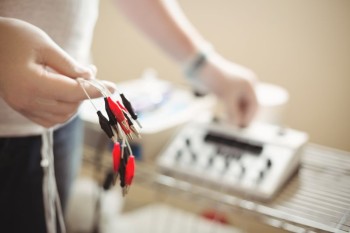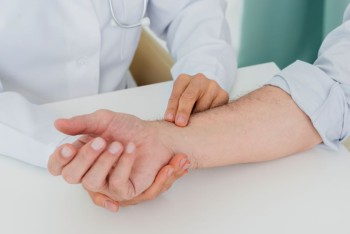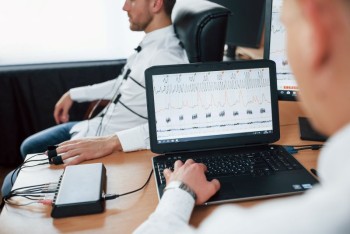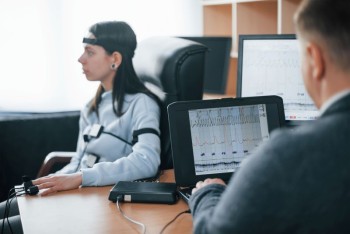
Assessing nerve function in the upper and lower limbs is crucial for diagnosing and managing various neurological and orthopedic conditions.
NCV or NCS Upper or Lower Limbs in India with Cost
NCV/NCS Upper or Lower Limbs in Detail
Introduction to Nerve Conduction Velocity (NCV) and Nerve Conduction Study (NCS) in Limb Assessment
Assessing nerve function in the upper and lower limbs is crucial for diagnosing and managing various neurological and orthopedic conditions. Nerve Conduction Velocity (NCV) and Nerve Conduction Study (NCS) serve as invaluable diagnostic tools, providing insights into the health and functionality of nerves in these vital anatomical regions.
Purpose of NCV/NCS in
Limb Assessment
The primary purpose of conducting NCV/NCS tests in limb assessments is to diagnose peripheral neuropathy and identify nerve compression or entrapment syndromes. These tests offer specific information about the upper and lower limb nerves, aiding healthcare professionals in developing targeted treatment plans.
Principles of NCV/NCS in Limb Assessment
NCV/NCS in limb assessments involve measuring the speed at which electrical impulses travel along nerves. By applying controlled electrical stimuli and recording the nerve's response, these tests detect abnormalities in upper and lower limb nerves, contributing to a comprehensive understanding of nerve functionality.
Equipment Used in
NCV/NCS Limb Assessments
Specialized equipment is employed in NCV/NCS limb assessments, including electrodes for stimulating nerves, stimulators for controlled impulses, and recording devices to capture nerve responses. The precision and quality of this equipment are crucial for obtaining accurate assessments of upper and lower limb nerves.
Procedure for NCV/NCS Limb Assessments
The procedure for NCV/NCS limb assessments involves careful patient positioning to evaluate upper and lower limbs separately. The steps include electrode placement, controlled stimulation of nerves, and recording responses, ensuring a thorough assessment of nerve conduction in both upper and lower limbs.
Interpretation of NCV/NCS Results in Limb Assessments
Interpreting NCV/NCS results in limb assessments requires analyzing normal and abnormal values specific to upper and lower limbs. Deviations from the normal range provide insights into potential conditions affecting the nerves in these anatomical regions, guiding further diagnostic and treatment decisions.
Applications of NCV/NCS in Limb Assessments
NCV/NCS tests have specific applications in diagnosing conditions such as carpal tunnel syndrome in the upper limbs and detecting sciatic nerve issues in the lower limbs. The information obtained contributes to precise diagnosis and tailored treatment plans for conditions affecting upper and lower limbs.
Types of NCV/NCS Tests for Limb Assessment
There are distinct types of NCV/NCS tests for upper and lower limb assessments. Motor NCV and Sensory NCV for upper limbs evaluate the speed of impulses in nerves controlling movement and sensation. Similarly, Motor NCV and Sensory NCV for lower limbs provide specific insights into nerve conduction in the lower extremities.
NCV/NCS in Neurology for
Limb Disorders
In neurology, NCV/NCS tests play a crucial role in diagnosing and monitoring neurological conditions affecting upper and lower limbs. The results contribute to treatment planning, helping healthcare professionals develop strategies to manage conditions impacting nerve functionality in these regions.
Comparative Analysis with Other Nerve Assessment Techniques in Limb Assessments
Comparing NCV/NCS with other nerve assessment techniques like electromyography (EMG) and imaging studies helps healthcare professionals understand the strengths and limitations of each method. NCV/NCS provides focused insights into nerve conduction in upper and lower limbs, complementing the broader perspectives offered by other tests.
Challenges and Considerations in Conducting NCV/NCS Limb Assessments
Several factors can influence the accuracy of NCV/NCS limb assessments, including patient cooperation, body temperature, and the presence of certain medications. Addressing these challenges is crucial for obtaining reliable and clinically relevant results in the evaluation of upper and lower limb nerves.
Recent Technological Advancements in NCV/NCS Limb Assessments
Recent technological advancements in NCV/NCS limb assessments include innovations in electrode design, signal processing algorithms, and improved stimulator devices. These developments enhance the efficiency of tests, contributing to a more comfortable patient experience during upper and lower limb evaluations.
Future Trends in NCV/NCS Technology for Limb Assessments
The future of NCV/NCS technology for limb assessments is anticipated to witness advancements in both methodology and technology. Predicted developments include integration with artificial intelligence for data analysis, miniaturization of equipment, and advancements in telemedicine applications, reshaping the landscape of upper and lower limb assessments.
Case Studies
Demonstrating NCV/NCS Success in Limb Assessments
Real-world case studies demonstrate the success of NCV/NCS in diagnosing and managing various conditions affecting upper and lower limbs. These cases showcase the versatility and accuracy of NCV/NCS in providing actionable insights for healthcare professionals, leading to effective treatment strategies.
Patient Preparation for NCV/NCS Limb Assessments
Patients undergoing NCV/NCS tests for limb assessments should be informed about the procedure and any necessary preparations. This includes guidelines specific to upper and lower limb assessments, addressing common concerns, and ensuring a comfortable testing experience for patients undergoing evaluation.
Conclusion
In conclusion, Nerve Conduction Velocity (NCV) and Nerve Conduction Study (NCS) emerge as indispensable tools in the comprehensive assessment of nerve functionality in upper and lower limbs. Their applications in neurology, orthopedics, and beyond contribute to tailored treatment plans, emphasizing their pivotal role in modern medical diagnostics.
FAQs About NCV or NCS For Limbs
Is NCV/NCS testing painful for upper and lower limbs?
NCV/NCS
testing is generally well-tolerated and minimally uncomfortable for both upper
and lower limbs. Patients may feel a brief, mild electrical sensation during
the test.
How long does an NCV/NCS test for upper and lower limbs typically take?
The duration of an NCV/NCS test for upper and lower limbs depends on the specific nerves being evaluated, but it usually ranges from 30 minutes to an hour.
Can NCV/NCS tests diagnose conditions other than nerve disorders for
upper and lower limbs?
While NCV/NCS is primarily used for nerve-related conditions, it can also provide insights into certain muscle disorders, contributing to a comprehensive diagnostic assessment for both upper and lower limbs.
Are there any risks associated with NCV/NCS tests for upper and lower
limbs?
NCV/NCS tests for upper and lower limbs are generally safe, with minimal risks. Some patients may experience mild discomfort or skin irritation at the electrode sites.
Are upper and lower limb assessments with NCV/NCS covered by insurance?
Typically, insurance
often covers NCV/NCS tests for both upper and lower limbs, especially when they
are deemed medically necessary. Patients are advised to verify the specific
details of their coverage by consulting with their insurance provider.
(0)
Login to continue



